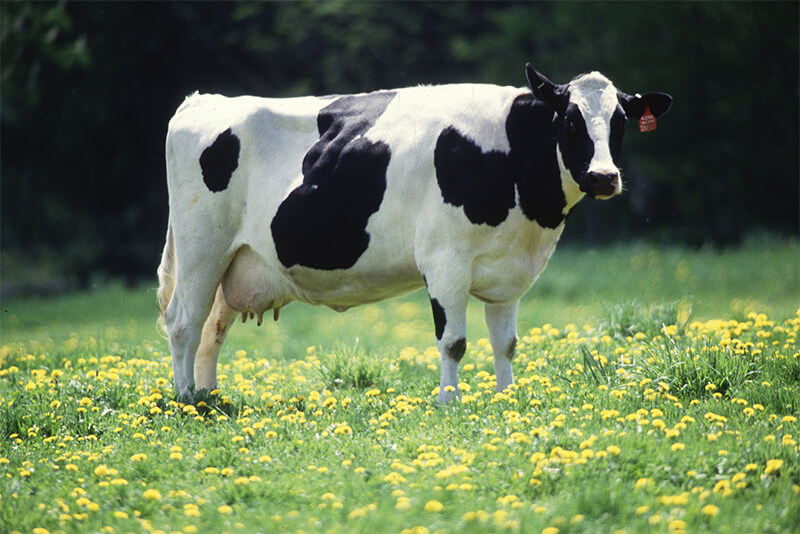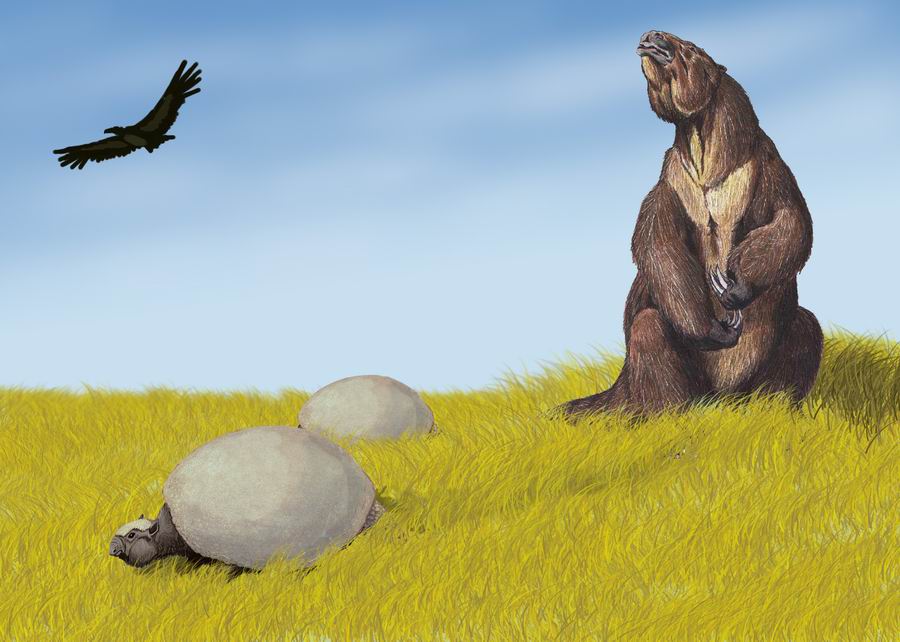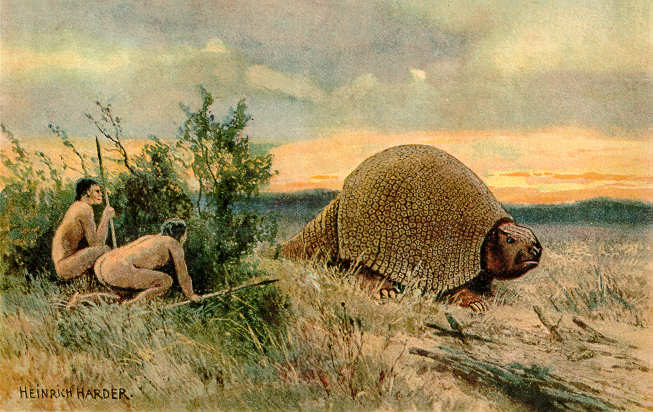
20th April 2018 Cow may be largest land mammal on Earth by 2200 Extinctions of the largest species on each continent have led to a downgrading of maximum body size over time. If this trend continues, then the largest terrestrial mammal in 200 years will be the domestic cow, according to a new study.
New research, published today in the journal Science, shows how an unprecedented wave of large-mammal extinctions caused by prehistoric humans led to a decrease in the average body size of animals. The trend has continued through to the present day and may cause terrestrial mammal body sizes to reach their smallest point in the past 45 million years. The study also concludes that Homo sapiens, Neanderthals and other recent ancestors may have begun hunting these giant animals at least 90,000 years earlier than previously thought. The paper – Body size downgrading of mammals over the late Quaternary – is the first to show quantitatively that the human impacts on mammal body size predate their migration out of Africa, and that size-selective extinction is a hallmark of human activities and not the norm in mammal evolution. "One of the most surprising finds was that 125,000 years ago, the average body size of mammals in Africa was already 50% smaller than other continents," explains Felisa Smith, a professor from the University of New Mexico who has studied megafauna extinctions for more than 15 years. "We suspect this means that archaic humans and other hominins had already influenced mammal diversity and body size in the late Pleistocene." This find was particularly surprising since Africa is a huge continent, and larger landmasses tend to house and support larger mammals. However, it seems that by the late Pleistocene, hominins had already reduced the diversity of mammals there. Over time, as humans migrated around the globe, extinctions of the largest mammals followed. These included the woolly rhinoceros, mammoths, llamas, camels and giant ground sloths, as well as ferocious predators, such as the short-faced bear, and the scimitar and sabre-toothed cats. Gradually, the average body size of mammals on those other continents approached and then dropped well below Africa's. Mammals that survived were generally far smaller than those that went extinct.
"There is a very clear pattern of size-biased extinction that follows the migration of hominins out of Africa," said Professor Smith, who compiled extensive data including mammal body sizes, climate conditions, populations and geographic locations. In North America, for example, the mean average body mass of land-based mammals was 98 kg (216 lb) before humans arrived. That figure decreased as humans spread and populated the continent and today has shrunk to just 7.6 kg (17 lb). "It wasn't until human impacts started becoming a factor that large body sizes made mammals more vulnerable to extinction," said Kate Lyons, from the University of Nebraska-Lincoln. "From a life-history standpoint, it makes some sense. If you kill a rabbit, you're going to feed your family for a night. If you can kill a large mammal, you're going to feed your village." By contrast, the researchers found little support for the idea that climate change drove size-biased extinctions during the last 65 million years. Both large and small mammals seemed equally vulnerable to temperature shifts throughout that timespan. "You just don't see extreme size selectivity for mammals until the late-Pleistocene. Past climate changes don't result in size-selective extinction," said Lyons. "We suspect that in the past, shifts in climate led to adaptation and movement of animals, not extinction," explains co-author Jonathan Payne, "Of course, today ongoing climate change may result in extinction, since most megafauna are limited in how far they can move." "Our study suggests that all of these mammal extinctions are part of a long-term trend," explains co-author Rosemary Elliott Smith. "This was fascinating because it only occurred after the arrival of early humans."
The team also looked ahead, to predict how future extinctions will affect the world's biodiversity. They posed a question: what would happen if the species now listed as vulnerable or endangered were to go extinct within the next 200 years? In that scenario, Lyons says, the largest remaining land mammal would be the domestic cow. The mean average body mass of land mammals would plummet to just 2.7 kg (6 lb), the size of a Yorkshire terrier. "Megafauna play a really important role in ecosystems, which we are just beginning to appreciate," says Smith. "For example, as they walk, their massive size compacts the soil, which can lead to changes in gas exchange or water tables. They change the structure of vegetation through their browsing and help maintain open grasslands. They burp methane, a greenhouse gas and even influence the distribution of nitrogen and phosphorous on the landscape. We are not entirely sure what the potential loss of these 'ecosystem engineers' could lead to. I hope we never find out." There is hope for the future, however. Conservation efforts can be aided by the use of drones and satellite imagery, for example. New food technologies such as lab-grown meat could greatly reduce humanity's impact on the biosphere. Urban areas can be designed to expand upwards, with taller buildings, rather than sprawling outwards. Large-scale reforestation efforts, some of which are already underway, can restore habitats. In the future, extinct species could be "resurrected" via the preservation of their DNA and introduction back into the wild. Entirely new species might be created, perhaps engineered to better withstand environmental impacts. So by 2200, perhaps the extinction trend will have reversed, with a number of giant creatures actually returning.
Comments »
If you enjoyed this article, please consider sharing it:
|









